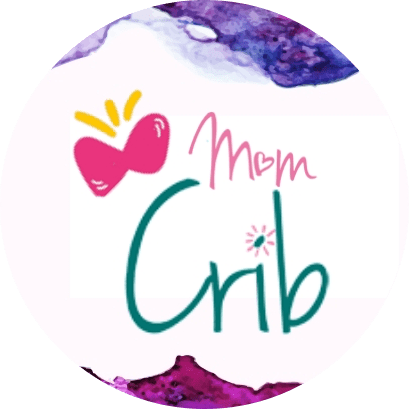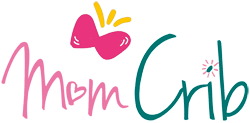Being a parent is a wonderful job, but it can sometimes be overwhelming! The sheer amount of equipment needed to care for a child is enough to drive anyone mad; when it comes to choosing a bottle for feeding time, the number of options on the market is enough to overwhelm the most seasoned parent.
Which Bottle Should I Choose?
Unfortunately, the process of finding the right bottle has to do with trial and error. If your child does not like the feel and fit of a particular bottle, there is no getting around it – you’ll have to purchase the next one, and the next one… until you find one or two that work for you. Once you have your “chosen” options in place, you’ll need to ask the question, “How many baby bottles do I need?”
How Many Baby Bottles Do I Need?
As parents quickly realize that one or two bottles just won’t cut it for a full day of feeding, many find themselves wondering, “How many baby bottles do I need?”
The answer really varies from family to family; it depends on how many times a day your child eats, whether you are nursing in combination with bottle feeding, and how often you feel like getting up to wash and dry bottles for later use.
A good starting point for most families is 4-6 bottles – consider the amount of formula or liquid your baby is drinking when choosing your bottle size. Most infants younger than 4 months will require no larger than 4 ounces, while children older than 4 months will need a larger bottle size – 8 ounces would be appropriate.
As you navigate the world of feeding, you might find yourself accumulating all sorts of bottles in different shapes and sizes. Do yourself a favor and organize them to prevent losing nipples, nipple rings, and other parts needed for a complete feeding. Nothing is more frustrating than having a screaming infant in your arms that you are not prepared to feed.
How Should I Clean These Bottles?
Now that you’re no longer wondering, “How many baby bottles do I need?”, you are likely left with the large task of cleaning them in between your many feeding sessions. Before your first use, you’ll want to sterilize nipples and other new parts in boiling water for at least five minutes – or use a baby bottle sterilizer.
After your first feeding, using hot, soapy water and a complete hot water rinse is acceptable for most bottles. You might consider investing in a good solid bottle brush so you can get way down in there, scrubbing out any milk or formula residue that can linger if it has remained in the bottle for too long.
Purchasing a drying rack is helpful as well; allow your bottles to air dry completely before re-using them. Air drying is an efficient and sanitary way to ensure that your bottles will be ready for your next feeding.
When Should I Introduce a Bottle?
If you are lucky enough to be able to breastfeed, you should do so as often and as long as possible to afford your baby the benefits that breast milk provides. Alternatively, you can fill up baby bottles with formula or breast milk.
If you need to supplement with formula, do what you can to exclusively breastfeed for at least the first four weeks after delivery to allow baby to get the hang of it.
There is a sweet spot to bottle introduction; if you wait longer than six weeks, your infant may refuse the bottle altogether. Allowing that time for mastery of breastfeeding while introducing the bottle will yield you better results.
How Should I Purchase My Bottles?
When purchasing your bottles for feeding, it is best to start out with a few kinds to see if they are appealing to your baby. Ask friends and family for recommendations, and look at reviews online to see what other moms appreciate about these products.
Type of Baby Bottles
Generally speaking, some of the more reputable brands of bottles are made from:
1. Plastic
Although lightweight and inexpensive, plastic bottles can easily stain and they deteriorate easily, so they would have to be replaced frequently.
2. Glass
Glass is heavier and more durable, and glass baby bottles are most certainly BPA-free. Drawbacks of glass bottles include their more expensive price points and the fact that they are breakable.
3. Silicone
Silicone is malleable and BPA free, but it can be more expensive than plastic or glass, and silicone bottles are typically not sold in stores. This can be particularly frustrating if you find yourself needing a quick replacement if one of your regular bottles cracks or breaks.
4. Stainless steel
By far the most durable and easy to clean bottle materials is stainless steel. However, stainless steel baby bottles can be quite expensive.
Types of Baby Bottle Nipples
Nipples are generally made from latex or silicone, and they need consideration with respect to size, shape, and flow in order to create optimal feeding conditions for your baby.
Shape of traditional nipples resembles that of a dome. Orthodontic nipples provide support for developing teeth and gums without compromising alignment, while flat and wide nipples mimic the shape of mom’s breast, which is perfect if you plan to switch back and forth from bottle to breast.
Size and flow affect the way that baby takes liquid from the bottle. Newborns and preemies need small nipples and slow flow, as they are learning to master their swallowing reflex and need help developing the muscles needed for suction. Older children with more voracious appetites can handle faster flow, as they have a need for greater volume that makes fast flow more efficient. Check with your pediatrician to see if the type of bottle and nipple you are using is right for your child.
How Many Baby Bottles Do I Need Again?
Again, the number of bottles a typical family needs is between 4 and 6.
There you have it – consider yourself a bottle expert who is ready to conquer the world of many feedings that you are in for until baby gains a bit more independence. Now if you just knew a bit more about burp cloths, you’d be set! Enjoy your time with your precious little one!
Next up: How to Bottle Feed a Baby – The Complete Guide.

The Mom Crib editorial team takes care that past articles are up to date in terms of the best baby products. We scour Amazon to find the products that are missing from our reviews and replace them. We also edit our blogger’s articles and make sure that everything is nice and neat, as their amazing posts deserve! Stay in touch with us by following our social media accounts.
